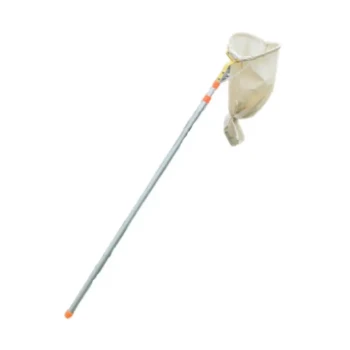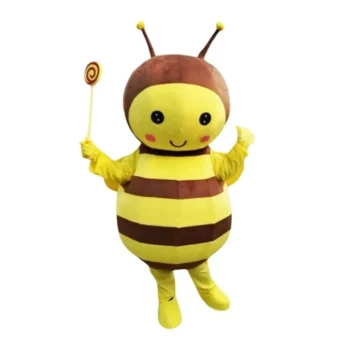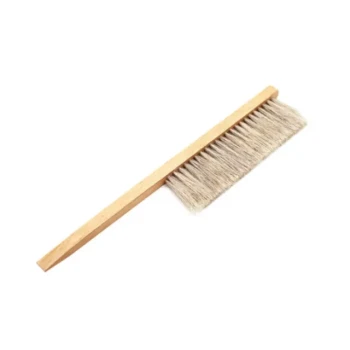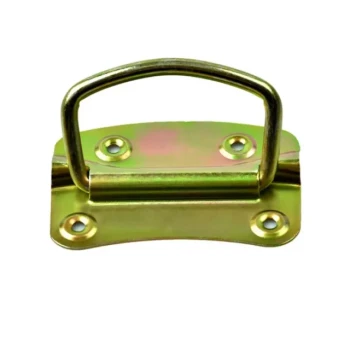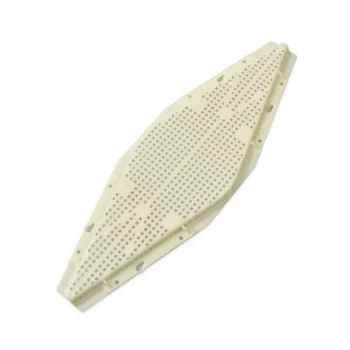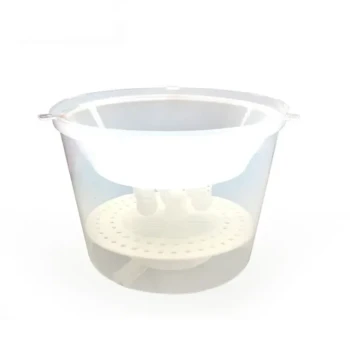To attract honey bees to a new bee box, the most effective method is to use a specific lure that mimics the scent of a queen and a settled colony. This typically involves using a few drops of lemongrass essential oil or a commercial swarm lure inside a properly prepared box. While sugar water can be used, it's primarily for feeding bees after they have been captured or installed, not for luring them from a distance.
The core challenge is not simply attracting bees, but understanding which bees you are trying to attract and why. Successfully populating a box depends entirely on whether your goal is to lure a wild swarm or to support a newly installed package of bees—the strategies are fundamentally different.
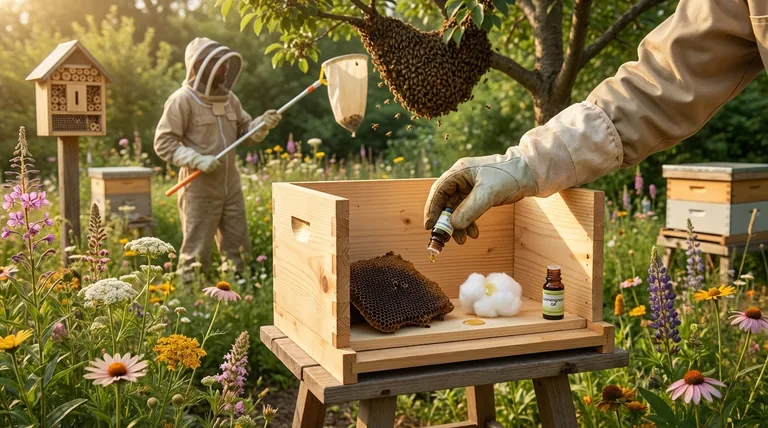
The Primary Goal: Luring a Wild Swarm
Most people asking this question are engaging in "swarm trapping" or "baiting a hive." This involves creating an ideal new home to entice a homeless swarm of honey bees that has recently left its old hive.
Why Swarms Look for a New Home
A swarm is a natural part of the honey bee life cycle. When a colony becomes too large, the old queen leaves with roughly half the bees to find a new home, leaving a new queen to take over the original hive.
These homeless swarms send out "scout bees" to find a suitable cavity. Your goal is to make your box the most appealing option for these scouts.
The Most Effective Lures
Scout bees are looking for signs of a safe, viable home. The most powerful attractants mimic the Nasonov pheromone, which bees use for orientation and to signal "this is home."
Lemongrass essential oil is the gold standard for beekeepers as its scent is remarkably similar to this pheromone. A few drops on a cotton ball inside the box are sufficient. Commercial swarm lures are also available and contain a more complex blend of these attractant scents.
The Best Attractant: Old Bee Comb
Beyond scents, the single most effective lure is old, dark brood comb from a previous hive. The smell of old wax, pollen, and propolis is an undeniable signal to scout bees that the location is a proven, successful home.
The Wrong Goal: Just Attracting Bees to Your Garden
A common misconception is that a bee box (a hive body) will function like a birdhouse, attracting local bees to move in permanently. This is incorrect for honey bees.
Honey Bees vs. Solitary Bees
A honey bee hive is a complex superorganism with tens of thousands of individuals. They do not establish new colonies casually. They only do so through swarming or when a beekeeper installs them.
If your goal is simply to support local pollinators, you should consider a "bee hotel" for native, solitary bees. These bees are non-aggressive and are excellent pollinators who will happily nest in pre-drilled blocks of wood.
Why Lures Alone Are Not Enough
Placing lemongrass oil in an empty hive in your yard will likely attract scout bees if a swarm is nearby. However, without a swarm actively looking for a home, you are simply creating a scent that will eventually fade.
Understanding the Pitfalls and Trade-offs
Using attractants requires precision. Applying the wrong strategy can lead to failure or create new problems.
Attracting Unwanted Pests
Using sugar water as a primary lure in an empty box is often counterproductive. While it can attract some bees, it is far more likely to attract ants, wasps, and robbing honey bees from other hives, creating a nuisance without capturing a colony.
The Limits of Swarm Trapping
Swarm trapping is a game of patience and probability. Success depends on the local honey bee population, the time of year (spring is swarm season), and the placement of your trap. Even a perfect setup is not a guarantee.
Misunderstanding Bee Needs
The most significant pitfall is failing to prepare the box correctly. The box must be the right volume (about 40 liters is ideal), have a small, defensible entrance, and be placed in a suitable location—often elevated and in partial shade. The lure is only one part of the equation.
Making the Right Choice for Your Goal
To succeed, you must match your actions to your specific objective.
- If your primary focus is to capture a wild honey bee swarm: Use a few drops of lemongrass oil or a commercial swarm lure inside a properly sized bait hive, ideally with a piece of old comb.
- If your primary focus is to install a purchased package of bees: You do not need a lure. Your priority is to provide a 1:1 sugar-water syrup feeder inside the hive to help them build comb quickly.
- If your primary focus is to attract more pollinators to your garden: Do not use a honey bee hive. Instead, plant native flowers and set up a bee hotel to support gentle, solitary bee species.
Ultimately, working successfully with bees comes from aligning your strategy with their powerful natural instincts.
Summary Table:
| Your Goal | Best Lure | Key Consideration |
|---|---|---|
| Capture a Wild Swarm | Lemongrass oil or commercial swarm lure | Mimics the Nasonov 'home' pheromone; most effective in spring. |
| Install a Package of Bees | Sugar water (1:1 syrup) feeder | Not for attraction; provides essential food for new bees to build comb. |
| Attract Garden Pollinators | A 'bee hotel' for solitary bees | Supports native, non-aggressive bees; a honey bee hive is not suitable. |
Ready to equip your apiary for success?
Whether you're a commercial beekeeper scaling up or a distributor supplying the industry, the right equipment is crucial. HONESTBEE supplies durable, high-quality beekeeping supplies and equipment through wholesale-focused operations, helping you manage swarms, install packages, and maintain healthy hives efficiently.
Contact our experts today to discuss your wholesale needs and ensure your operation is built on a solid foundation.
Visual Guide
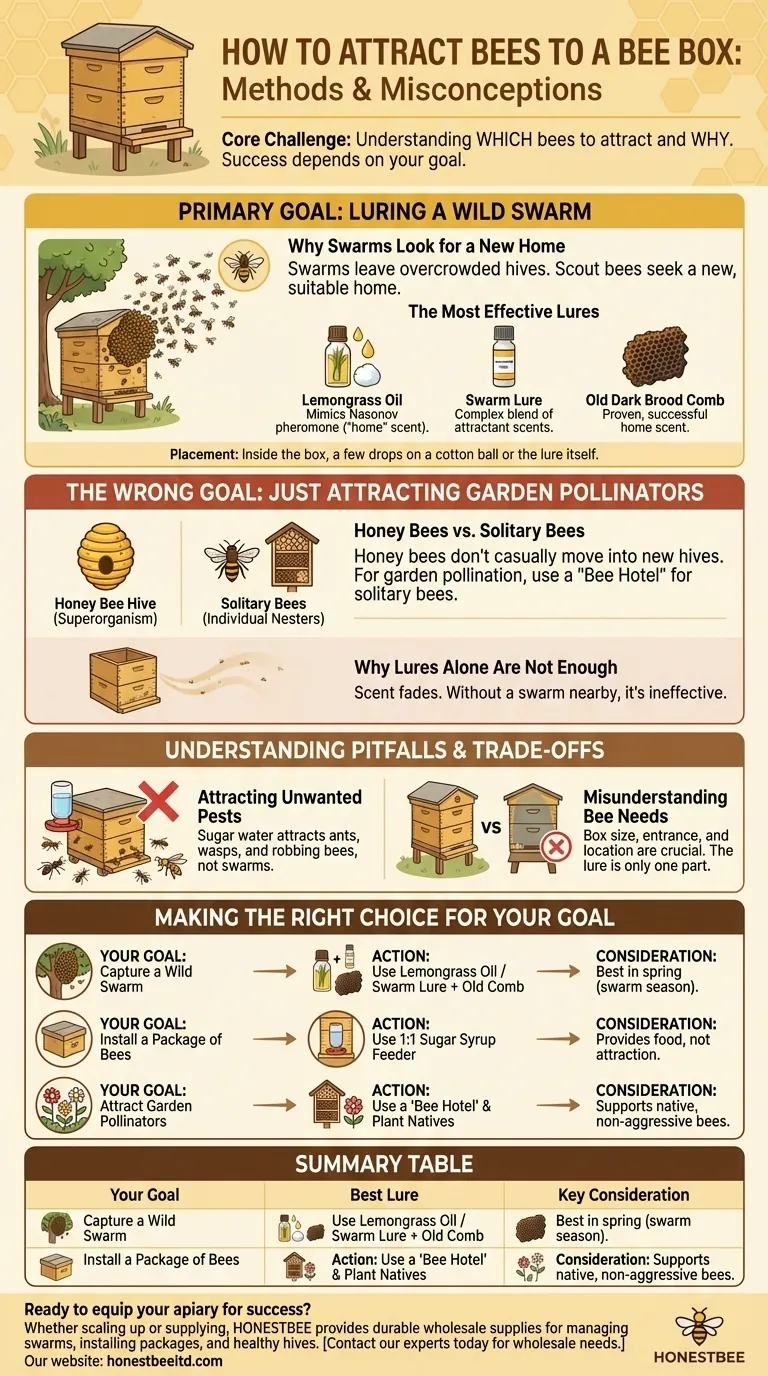
Related Products
- HONESTBEE Professional Telescopic Pole Bee Swarm Catcher
- Plush Bee Mascot Costume Professional Engaging Brand Ambassador
- Superhero Bee Mascot Costume Dynamic Professional Brand Champion Costume
- Wooden Bee Brush with Double-Row Horsehair Bristles
- HONESTBEE Professional Entrance Bee Feeder Hive Nutrition Solution
People Also Ask
- How do beekeepers catch bees? Master Swarm Capture for Apiary Success
- How should a captured swarm be placed into the hive equipment? A Guide to Secure Hiving
- What are the three main ways to obtain honeybees? Choose the Best Path for Your Apiary
- What precautions can be taken to prevent a newly captured swarm from absconding? Secure Your Swarm with Proven Methods
- How do commercial beekeepers prevent swarming? Master Proactive Hive Management
